
- 256 pages
- English
- ePUB (mobile friendly)
- Available on iOS & Android
About this book
This book illustrates basic practical applications of optical principle. Working models of telescopes, microscopes, photographic lenses, and optical projection systems are diagrammed and explained in full, as are the basic experiments for determining accuracy, power, angular field of view, amount of aberration, and all other necessary facts about the instrument. Throughout the book, only elementary mathematics is used, for the benefit of the student and the beginner in the field of optics.
The author, an assistant professor at the Imperial College of Science and Technology in London, shows how to set up working models of each of the four types of instruments named above, so that the reader can see for himself the effects of changing the focal length, using different types of lenses, rotating the lens, and other experiments. He also includes a number of experiments to illustrate theoretical principles such as the reflection and refraction of light and focal length measurements of concave and convex lenses.
A chapter on the human eye follows, and the author explains how to set up a simple working model of the eye in order to illustrate myopia, astigmatism, hypermetropia, and the visual acuity of the eye. Professor Johnson concludes with an important chapter on the working and testing of optical glass, in which he describes the roughing of lenses, the principles of the grinding and polishing processes, abrasives, edging, angle measurement, and other important steps in the production of optical glass. An appendix is included on the cleaning of glass surfaces, silvering, photographic items, developers, collodion films, and waxes and cements used for various purposes in optical work.
This is a valuable work for the student and the amateur hobbyist as well as for many who use optical instruments in science and industry. It is written clearly and economically, with the needs of the practical worker in the field of optics held constantly in mind.
Frequently asked questions
- Essential is ideal for learners and professionals who enjoy exploring a wide range of subjects. Access the Essential Library with 800,000+ trusted titles and best-sellers across business, personal growth, and the humanities. Includes unlimited reading time and Standard Read Aloud voice.
- Complete: Perfect for advanced learners and researchers needing full, unrestricted access. Unlock 1.4M+ books across hundreds of subjects, including academic and specialized titles. The Complete Plan also includes advanced features like Premium Read Aloud and Research Assistant.
Please note we cannot support devices running on iOS 13 and Android 7 or earlier. Learn more about using the app.
Information
CHAPTER I
REFLECTION AND REFRACTION OF LIGHT
Ray-projector



Laws of Reflection.

Angular Magnification by a Mirror.
Image in a Plane Mirror is same distance behind Mirror as Object is in Front.
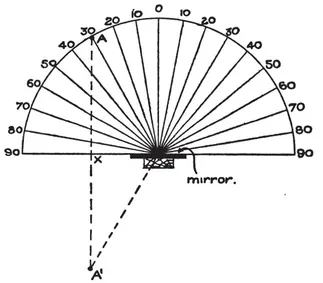
Reflection by two Mirrors Inclined at a Finite Angle.
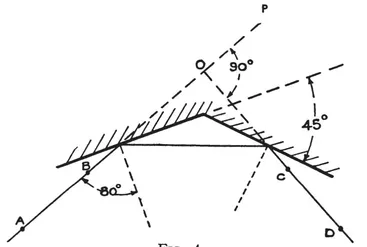
Mirrors at 90 degrees.
Mirrors at 45 degrees.
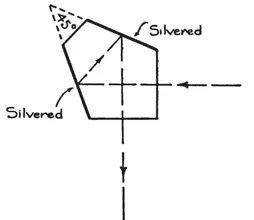
Reversals caused by Reflecting Systems.
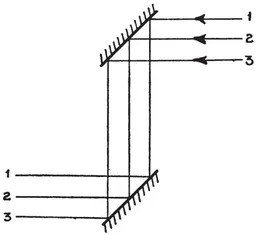

Binocular Prism.
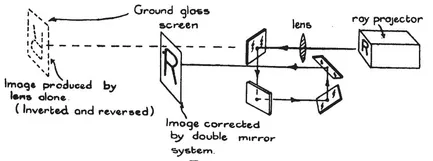
Table of contents
- Title Page
- Copyright Page
- FOREWORD TO DOVER EDITION
- Table of Contents
- CHAPTER I - REFLECTION AND REFRACTION OF LIGHT
- CHAPTER II - FOCAL LENGTH MEASUREMENTS
- CHAPTER III - THE EYE
- CHAPTER IV - THE TELESCOPE
- CHAPTER V - THE MICROSCOPE
- CHAPTER VI - PHOTOGRAPHIC LENSES
- CHAPTER VII - OPTICAL PROJECTION SYSTEMS.
- CHAPTER VIII - OPTICAL GLASS: ITS WORKING AND TESTING.
- APPENDIX
- INDEX
- A CATALOG OF SELECTED DOVER BOOKS IN SCIENCE AND MATHEMATICS